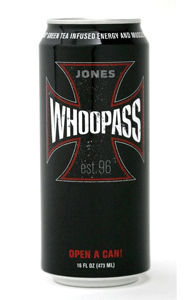Energy drink sales get a jolt

|
Sales of energy drinks have taken on the energy of its products compared to a year ago. The energy drinks category increased 15.7 percent for $6.9 billion in sales, according to SymphonyIRI Group, Chicago, for the 52 weeks ending May 15 in U.S. supermarkets, drug stores, gas and convenience stores and mass merchandise outlets, excluding Wal-Mart.
The flagship non-aseptic energy drink category increased 13.2 percent for more than $5.8 billion in sales. Top-seller Red Bull posted $2.3 billion in sales, which is a 14.3 percent increase, according to SymphonyIRI data. Hansen Natural Inc.’s Monster Energy also had a positive year with a 23.4 percent increase for $1.2 billion in sales. The company’s Monster Mega Energy, Monster Nitrous, Monster Khaos and Monster Assault also posted gains. Monster Energy XXL was the only Hansen brand to decrease in sales, the market research firm reports.
Rockstar International’s brands also had positive sales, with Rockstar Recovery being the biggest gainer at 627.3 percent growth in measured channels, SymphonyIRI data states.
The category also saw reform-ulation with the relaunch of Jones Soda Co.’s WhoopAss Energy Drink. The reformulated drink contains a blend of B vitamins for energy, metabolism-supporting amino acids, polyphenols and catechins for muscle recovery, it says. It also is a deep purple color and has a subtle exotic fruit flavor with notes of dragon fruit, the company says. Jones Soda also re-packaged the drink in a tall, black 16-ounce can with a red and gray Iron Cross graphic.
The energy drink category also has seen companies develop natural offerings, such as Nestlé USA partnering with Jamba Juice Co. to develop three new Jamba All Natural Energy Drinks. Made with 70 percent fruit juice, the drinks contain 80 mg. of caffeine, 90 calories and 20 grams of sugar in an 8.4-ounce can.
PepsiCo’s Amp brands saw mixed results with Amp showing a slight decrease and Amp Energy and Amp Overdrive both increasing sales. The Coca-Cola Co.’s Full Throttle and Full Throttle Blue Demon brands both reported decreases in measured channels, according to SymphonyIRI data.
Although the energy shot category remains smaller than the energy drink category, it has shown staying power as it again posted strong numbers with $1 billion in sales, which is a 33.6 percent increase, SymphonyIRI states.
The category continues to be led by 5 Hour Energy, which increased sales 45.3 percent for more than $885.2 million in sales, according to SymphonyIRI data. Living Essentials’ flagship brand also upped its market share 7 percent to occupy 87.3 percent of the energy shot category, according to the market research firm. The company’s 5 Hour Energy Extra Strength also posted strong growth numbers at 97.5 percent.
Although the shot category performed well, some brands faded compared to last year, such as Red Bull’s energy shot and Monster Hitman.
NVE Pharmaceuticals’ Stacker2 brand showed the most growth with a 281.8 percent increase for $3.9 million in sales, according to SymphonyIRI.
The growing category also has seen private label sales increase and more new products enter the marketplace. Cintron Beverage Group added Cintron Liquid Energy Shots in the same flavors as its energy drinks: Tropical Azul, Cranberry Splash, Citrus Mango and Pineapple Passion. All shots are sugar free and contain no calories and carbohydrates, the company says.
Similar to the products’ effects on consumers, the category seems to be on an energized path. Mintel International, Chicago, predicts in its “July 2010 Energy Drinks and Energy Shots” report that sales will increase 147 percent in current prices from 2010 to 2015. BI
Looking for a reprint of this article?
From high-res PDFs to custom plaques, order your copy today!



